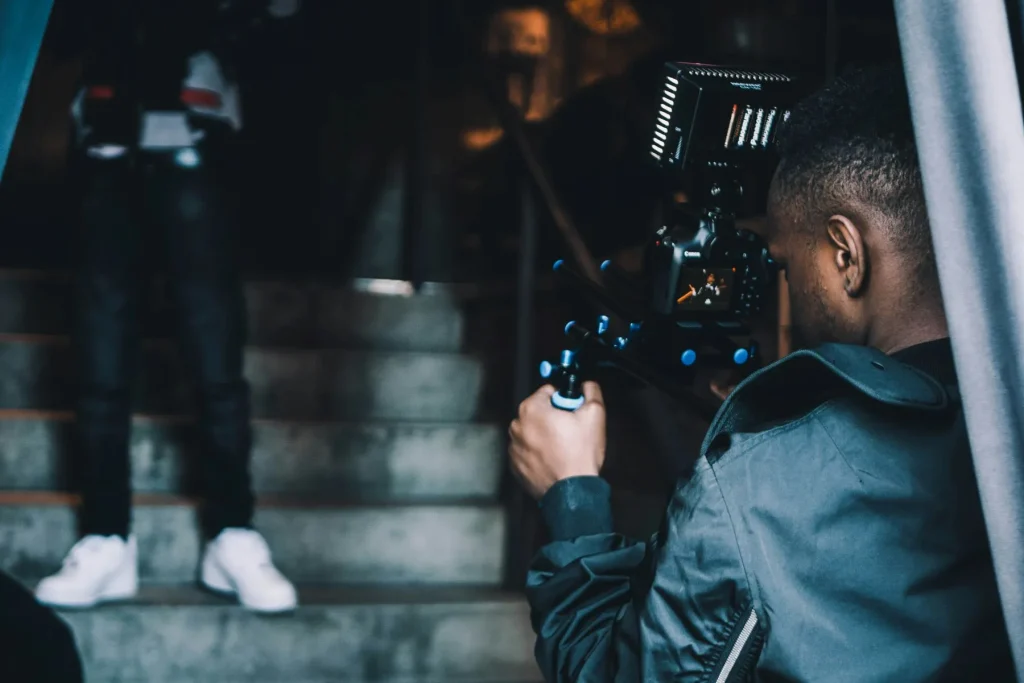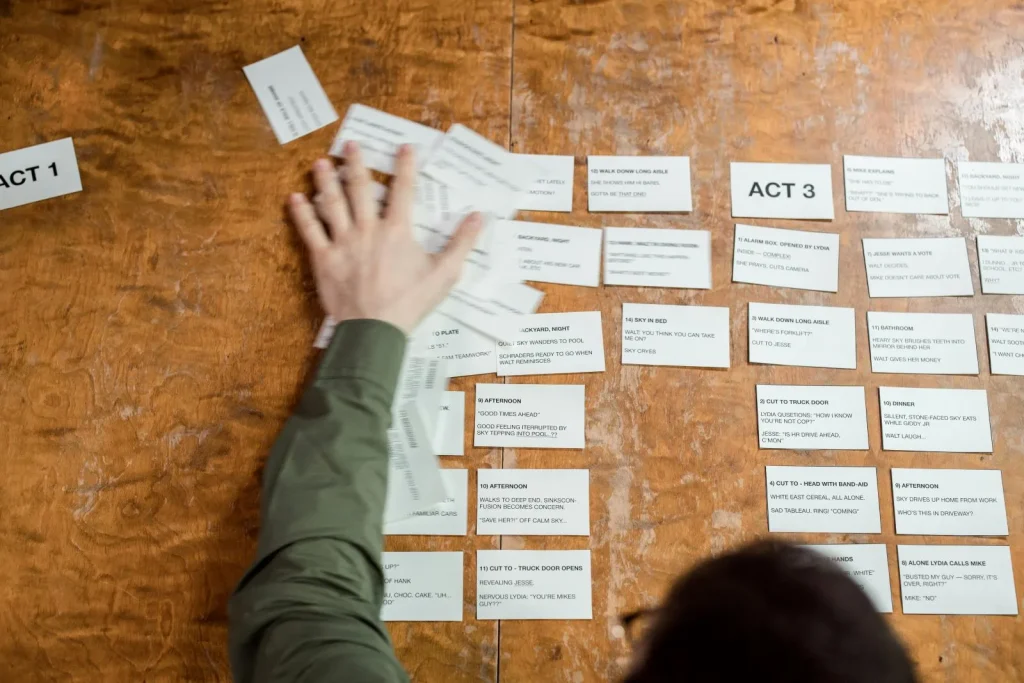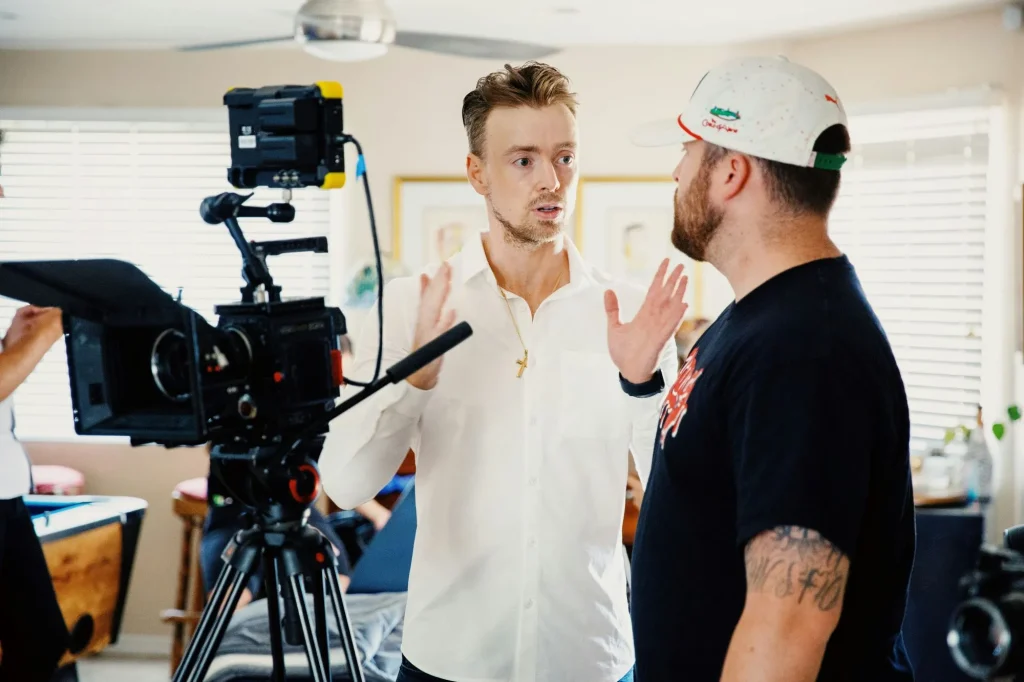What is video post-production? The easiest way to describe it would be as the process of polishing a video after everything is recorded. It is one of many ways to improve the quality of the recording and further add effects, music, sounds, and so much more.
To fully understand why post-production is such an important part of creating content, there are several things you need to know. So let’s start from the beginning!
What Is Post-Production in Video?
Video post-production is a process of editing and polishing the original video to improve the quality, add effects, adjust its length, and so much more. It is one of the most important steps in the production of movies and TV shows, but it is also used for other types of videos as well.
The process can be quite complex based on the material, and it can last for up to several months. It is not rare for a high-budget movie to spend half a year in post, ensuring every single element is flawless.
If you are wondering how to do video post-production, there are several steps you can follow. However, these will vary based on the type of project. After all, you may not need all the elements of video post-production depending on the genre and length of the video you are creating.
Finally, you will need to have the necessary tools and equipment to handle the process. The tools you will need will also depend on the project. But before you even get to do video post-production, there are a few other elements you’ll need to cover first.
Key Elements of the Process
There are three main elements to video production, and each is equally important. These are:
- Pre-production
- Production
- Post-production
While our primary focus here is on post-production, you’ll still need to go through pre-production and production to gather the material you need for post-production.
Pre-production
The first step in making any type of content is pre-production. It is the planning process. During this stage, you will ensure your script is flawless, find locations for shooting, create storyboards, hire actors, the production team, and so on.
The length of the process will depend on the type of content. For example, pre-production for films lasts longer since there are so many moving parts. Hiring cast and crew, getting funds, and planning the process, although essential, are all time-consuming.
Once you are finished with the planning, you can proceed to production.
Production
Production is the bread and butter of any movie set — it’s also known as the shooting phase. This stage can include shooting in various locations, sound recording, and reshooting and can make or break your film.
The reason is simple — the better your original footage, the less time you will need to spend in post-production. Although the goal of post-production is to polish the recording, it can’t make a delicious pie out of rotten apples.
That’s also why it’s common to send the footage after each day of filming to the post-production crew so they can start working as soon as possible. However, that will mostly be the case for longer projects.
For shorter videos, sending all the material as soon as it’s recorded might not be necessary.
Post-Production
As mentioned earlier, post-production can start during the production phase, but it is still the final piece of the puzzle. It includes polishing and improving the quality of the original recording, adding effects, mixing, editing, color grading, and so much more.
During this step, the team will also work on audio post-production, which can include ADR, foley recording, scoring, and other elements present in the workflow. When combined, audio and video post-production will deliver the final product that is ready for cinemas, television, or any other platform.
What Is Included in Video Post-Production?
To fully understand the process of post-production, we should go through each element that you might need.
- Video editing: Choosing which scenes to keep and which need to be removed or re-shot, stitching everything together, and making the first version of the movie.
- Color grading and color correction: Adjusting the colors of each scene, saturation, contrast, temperatures, and anything else that can help realize the director’s vision.
- VFX: Visual effects (VFX) are necessary for certain genres like science fiction. Today, CGI can save time and money during post-production, and almost every movie uses it.
- Sound recording: While recording sound on-site is part of pre-production, some elements won’t be usable and will require re-shooting. This is a part of audio post-production within the general post-production process, and it can include ADR and foley recording.
- Foley recording: Foley artists will often need to record subtle sounds for movies and TV shows, and this element is another important one to add to the mix.
- Sound mixing and editing: After all dialogues are recorded, foley sounds, effects, and anything else needed for the movie, the engineers will proceed to create a coherent mix that will resemble the final product.
- Scoring and music: Sounds and music are essential to convey a specific idea, theme, or feeling in each scene. The composers will create a score, and the final version of the video will be around the corner.
- Final cut and polishing: The final cut of the video is ready, and the director will double-check the entire project to ensure the quality is up to par. If needed, they will do a final round of polishing and prepare the project for release.
The process of post-production combines both audio and video, but they will take place in different stages of the process.
Stages of Video Post-Production
Typically, the process of video post-production will include four stages. These stages are used regardless of the content genre, and each video project will follow them:
- Logging material: During the recording, the director and crew will label every scene so they can use them in the following steps.
- Assembling: Assembling the footage is the first step where the editor will mix all the scenes as they happen in the movie. Since scenes are often recorded in a different order, it is crucial to label everything correctly. Any scene that is not up to standard or has problems will be deleted, and the film will begin to take shape.
- Rough cut: The rough cut of the movie will offer the final takes of each scene, and the editor will create a rough edit of the project. During this stage, the post-production team will work on color correction, sounds, effects, and everything else needed to polish the product. As the project improves and each scene is polished, the rough cut will evolve into the fine cut.
- Final cut: The final cut is the last version of the video that is ready for cinemas, streaming platforms, or TV.
The length of the process will depend on the type of project, how many changes it needs, special effects, amount of re-shoots, and so on.
Roles in Video Post-Production
Each member of the team will have their own job, and it is good to know who does what. People are familiar with the director’s role, but there are so many important roles in post-production.
This includes:
- Editors: Editing is one of the first steps of the process, and editors will be in charge of arranging all the scenes and creating a coherent, first version of the video.
- Foley artists: Foley artists create sounds in the studio for movies and shows. These can be the sound of footsteps, leaves, creaking of the doors, etc.
- Sound editors: Sound editors are in charge of the audio post-production, and they will mix and edit all the dialogues, record ADR, and make the audio as good as it can be.
- Music editors: Music editors or composers are in charge of scoring and soundtrack.
- Sound mixers: Sound mixers are responsible for adjusting audio levels and polishing the audio.
- VFX artists: In case there are special effects, the VFX team will be in charge of adding effects, polishing CGI, and improving each scene.
- Supervisors: Supervisors are in charge of overseeing the project and having a clear vision and goal. That will help avoid mistakes and have a unified product once the post-production is over.
As always, the roles will depend on the project. You might not need special effects, which will also eliminate the need for VFX artists. For example, documentaries, sports events, or podcasts won’t need special effects. On the other hand, a VFX team is necessary for sci-fi movies and shows. So, plan accordingly.
Is Post-Production Necessary?
Yes. Video post-production is necessary for any type of project. Regardless of the type of video you are making, you will be filming different scenes and multiple takes, and it will be crucial to put everything together.
Even if you are making a YouTube video on your own, you will still need to edit it. When it comes to the length of the process, the type of content and duration will play an important role in it.
For example, Hollywood movies can spend between six and twelve months in post-production, especially if they need special effects. On top of that, some scenes will require re-recording of dialogues through ADR, reshoots, music scoring, and further polishing.
On the other hand, simpler content like YouTube videos won’t take as long to complete. Even if you are an absolute beginner, it shouldn’t take you more than twenty hours to edit a video. Those with experience can usually edit an average-length video in four to eight hours.
So, the question isn’t whether post-production is necessary, but how complex the process will be. Either way, it is something you should add to your video post-production workflow regardless of the content you are making.
Need Professional Help With Video Post-Production?
Whether you are struggling with organizing the process of post-production, lack a team, or require expertise, there is a simple solution — Force Media can help! Our team has over a decade of experience in post-production for movies, series, anime, documentaries, and short-form videos and can handle the entire process for you.
We can help you with every stage of the post-production process, including:
- Video post-production
- Audio post-production
- Dubbing
- Voice overs
- Localization
- Music creation
- Sound design
- And more
If you are interested in learning more about how our team can support you, contact us today. We’d love to meet you and help you make the movie or video of your dreams!


